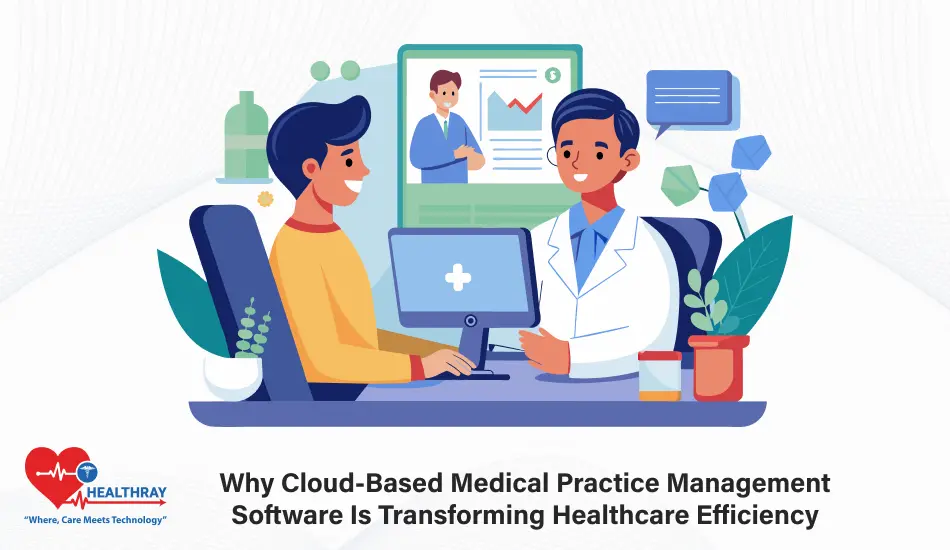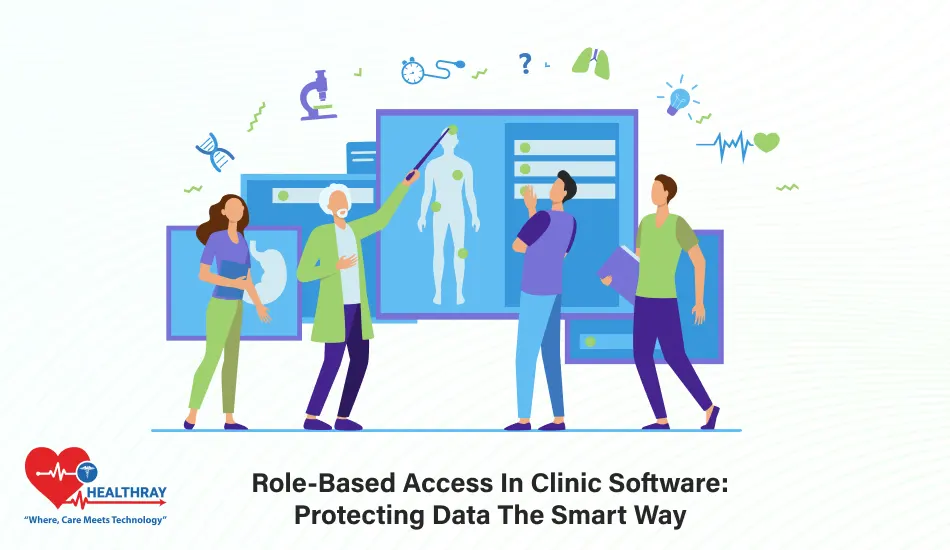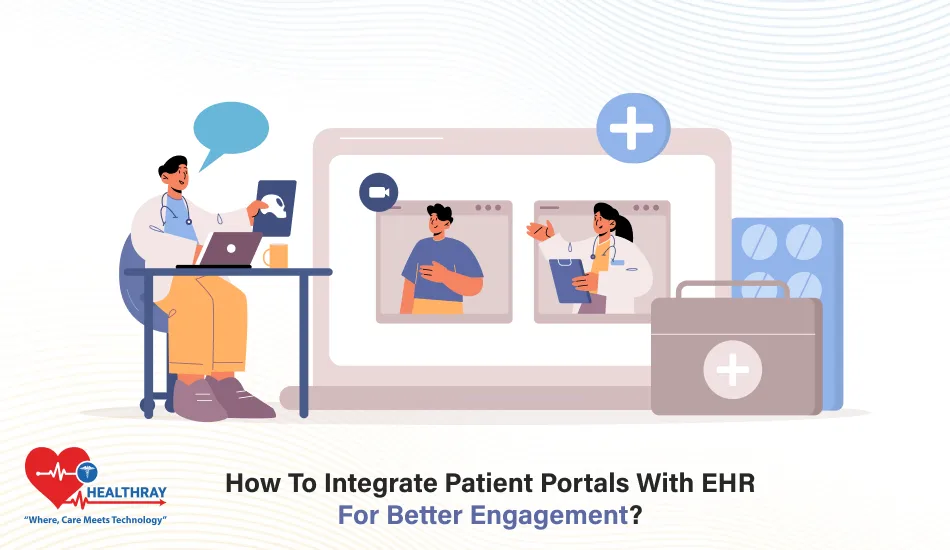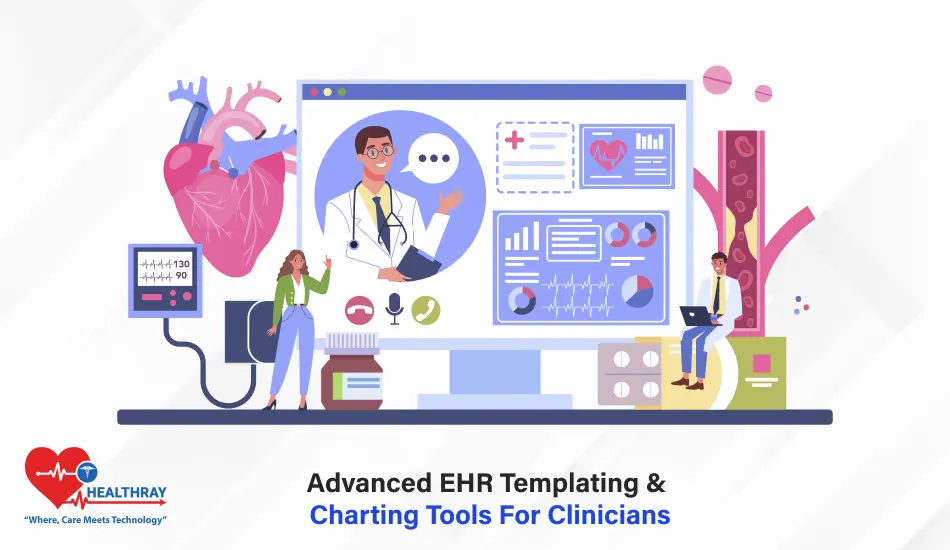Summary
Modern healthcare runs on data, speed, and smart technology, and Clinical Decision Support in EHR stands at the centre of it all. It prevents medication errors, flags potential risks and helps doctors make faster, safer decisions. Every click in an AI-based EHR software leads from data to life-saving treatment.
Also, patient portal integration in EHR allows for clearer communication with physicians and patients; there are no miscommunications and no mix-ups. They are building a safer, smarter healthcare world that saves lives with technology. Curious how this digital superhero is helping with patient safety on a daily basis? Read the full blog here!
Introduction
In today’s modern healthcare world, time is something you can’t afford to waste. This is where Clinical Decision Support in EHR enters the picture. It’s not just software; it’s a digital wingman that helps doctors make better, safer decisions, quickly.
Under contemporary EHR software, each alert, suggestion, and data point functions in real time as a safety compass directing care. Doctors see risks before they become emergencies, and patients are kept safe at every step. And nobody has to waste time guessing or paging through bulky files. Instead, there is confidence and certainty behind every decision.
The good news? It never sleeps, forgets or gets distracted. Do you want to consider how this clever support mechanism is saving lives every day? Let’s find out the secret to safer care!
What Is Clinical Decision Support in EHR?
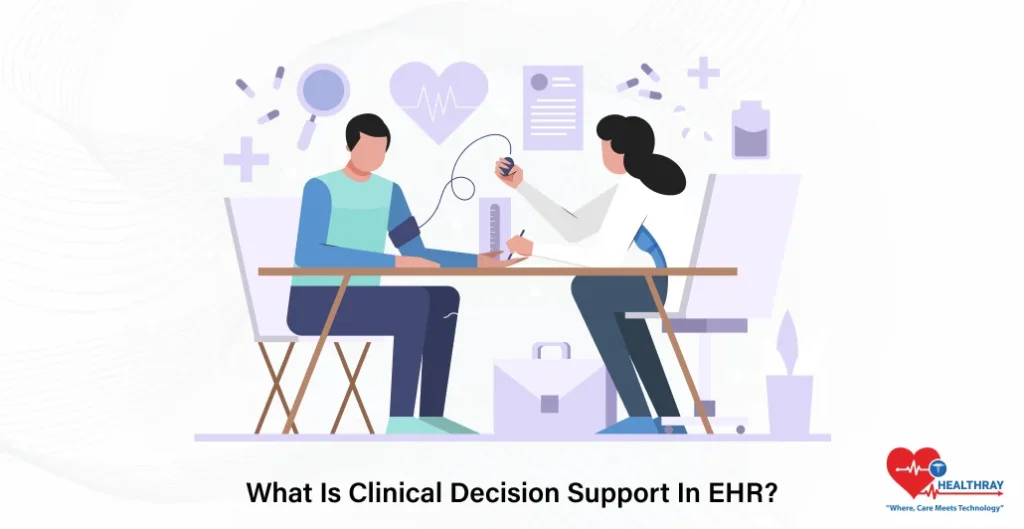
Clinical Decision Support in EHR is much like an intelligent assistant to physicians and nurses. Specifically, it works inside EHR software to help them make the right medical decisions. Rather than memorizing information, physicians receive in-the-moment recommendations, reminders, and alerts as they are providing care. For instance, it can alert to drug allergies, to wrong doses, or to dangerous combinations.
Moreover, with AI-based EHR software, this support can become even smarter. In particular, it analyzes trends, makes comparisons among patients, and predicts potential health risks. Additionally, it can alert physicians to problems early, before serious symptoms set in. Furthermore, it also recommends treatment plans in accordance with medical guidelines.
In that way, there is less time spent doing paperwork and more time with patients. In short, Clinical Decision Support in EHR and AI-based EHR software complement each other in making the healthcare experience safer, smarter, and more connected for all.
How Clinical Decision Support in EHR Keeps Patients Safe?
Let’s look at how this tool keeps patients safe every day.
Prevents Medication Errors
Among the top injurious events in hospitals is drug error. Indeed, even a small mistake can hurt a patient. Consequently, Clinical Decision Support in EHR seeks to prevent that from happening. Specifically, when a doctor prescribes a drug, the system checks everything instantly, including allergies, dosage, and drug interactions.
If, for instance, the medicine might cause a problem, a real-time alert pings. Therefore, the doctor sees it right away and can change it before giving the drug. Moreover, this warning system is quick, transparent, and accurate.
Furthermore, in the case of the AI-based EHR software, the level of safety increases even more. It learns from patterns and from the history of patients. Consequently, it can catch hidden risks, such as a slow reaction to a drug that might turn serious later. Additionally, it also looks at similar cases in EHR health systems to alert to possible side effects.
The goal is a simple one: give the right medicine, in the right dose, at the right time. Consequently, in doing so, technology saves lives and strengthens the bonds of trust between patients and doctors. When combined with patient portal integration in EHR, medications can also be viewed online by patients. As a result, they can confirm prescriptions and update each other more easily, cutting down on confusion and making treatment safer.
Gives Evidence-Based Recommendations
Doctors make hundreds of decisions every day, and each one matters. Sometimes, therefore, they need to access the latest medical research in a hurry. That’s where Clinical Decision Support in EHR comes in. It draws on medical guidelines and patient information to recommend safe, effective treatments.
For instance, if a patient has high blood pressure and diabetes, it suggests the optimal drug combinations. Additionally, it tells you what not to do. Instead of rifling through books or reports, the doctor sees it all in seconds.
Furthermore, this advice is not accidental. In fact, it is drawn from reputable databases and studies that are incorporated within the EHR health systems. Consequently, in EHR software, these insights are integrated into the patient record.
Moreover, the role of AI-based EHR software extends this further. It learns from thousands of real-world patient cases and outcomes. Thus, it offers recommendations that fit the condition, of course, but also the individual patient’s medical narrative.
In addition, when the patient portal integration in EHR is active, patients can read about treatment. They can see why certain medicines and tests were chosen. As a result, doing so makes them more conscious and engaged in their own care. More understanding means more safety, and that is ultimately what technology is meant to ensure.
Detects Early Risks
The best way to protect patients is to see danger before it becomes too large. In fact, the Clinical Decision Support in EHR does this perfectly. It continually monitors patient data for alerts. For instance, if a lab result is slightly abnormal or a vital sign has changed, the system alerts the user instantly.
Consequently, doctors then get an alert and can act before a condition worsens. Therefore, early diagnosis can prevent infection, sepsis, and even organ failure. So, it’s like a digital watchman, with no sleeping hours and no detail missed.
Moreover, EHR health systems contain millions of health data points, from lab reports to imaging scans. By linking all of it up through AI-based EHR software, hospitals can more quickly predict risks. For example, the software can flag patients likely to suffer a heart attack or complications before they manifest.
It’s this proactive care that makes the difference. Rather than responding to sickness, hospitals can be preventative. Furthermore, when patient portal integration in EHR is implemented, patients also receive notifications of their lab results or alerts. They can message their doctor immediately if something looks wrong. Thus, it connects technology, doctors, and patients in a partnership geared toward safety.
Reduces Human Mistakes
Even the best doctors are human. They get tired, busy, or distracted; consequently, errors are possible, and likely, with such a large volume of patient data. However, Clinical Decision Support in EHR functions as a net to catch those falls. It automatically validates the data and keeps everything up to date.
So, if a patient’s allergy information is missing, the system sends a reminder. Furthermore, it also alerts the care team when a test result has not been reviewed yet. This, in turn, puts an end to guesswork and is less stressful. As a result, doctors are free to focus on patients rather than bureaucrats.
Moreover, AI-based EHR software even improves accuracy. It flags absent data, duplicate entries, and incorrect lab values before they can do any damage. Additionally, it learns over time what kinds of errors tend to be common and helps prevent those.
EHR software also ensures that everyone is seeing the same correct data. Therefore, there is no doubt about who has done what and when. Ultimately, the system is transparent, and all patient contact is documented.
Improves Communication Among Care Teams
In a hospital, one patient may see many doctors, nurses, and specialists. Consequently, things get lost without good communication. That’s why Clinical Decision Support in EHR is so critical.
All team members are looking at the same patient data in real time. As a result, there are no mixed messages about test results, treatments, or medications. When a new doctor takes on the case, all is documented clearly in the EHR health systems.
Furthermore, the interoperability of EHR software across departments enables seamless coordination. Specifically, lab results, X-rays, prescriptions, and more, all enter in a single digital stream. This, in turn, cuts out wait times and avoids duplicate or conflicting treatment plans.
In addition, AI-based EHR software adds another level of intelligence. For instance, it points out what is most urgent or what needs to be reviewed first. If, for example, a patient’s oxygen level drops, it alerts the associated team members instantly.
Also, with patient portal integration in EHR, patients can be kept connected as well. They can check their reports, send secure messages to doctors, and receive care instructions without delay. Ultimately, it closes the feedback loop between patients and providers. Thus, everyone is kept in the loop, which prevents miscommunications.
Case Snapshot: When Technology Saved a Life

It was a normal morning in a bustling U.S. hospital, nurses rushing, doctors flitting from one patient to another. But somewhere in the quiet corners of the ICU, a silent hero in the EHR software began to act. But it was not a person; it was a smart feature called Clinical Decision Support in EHR.
One had just arrived with fever, confusion and low blood pressure. To begin with, it appeared to be a mild infection. But deep within the system, the patient’s lab results and vital signs were being analyzed in real time. The AI-based EHR software spotted a dangerous pattern: the early signs of severe sepsis. Within seconds, the system created a loud, clear alarm for the physicians.
That one alert changed everything. The EHR health system allowed doctors, nurses and crisis responders to connect in real time. The same data, updated in real time via the patient’s electronic record, was visible to everyone. Because the EHR also included a patient portal, the information became instantly available in other departments. Not an hour was wasted; not a minute; not a chart was lost.
The care team moved quickly. The doctor put the patient on antibiotics and began fluids right away. An hour later, the patient’s blood pressure had normalized. It should have been fatal, but it was a survival tale instead.
But this moment was more than serendipity; it was technology doing its job. The AI-based EHR software identified patterns of many patients stored in the EHR health systems, predicting the risk, and alerting at the right time.
Later, the hospital staff would understand what that warning meant. Otherwise, they could have been spinning their wheels. The patient was fine within days as a reminder of the fact that these tools do indeed save actual lives.
Conclusion
In the modern age, saving lives is not so much about skill as it is about intelligence and collaboration. Clinical Decision Support in EHR makes every moment in the hospital safer. With AI-based EHR software, physicians get alerts and inputs for their decision-making in real time.
They form a circle of care in which people and technology stand by patients. The future of healthcare isn’t coming, it is here, and it is smarter, faster and trying to keep every heartbeat safe.


